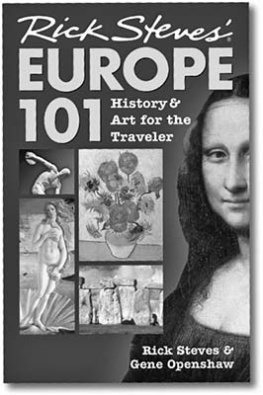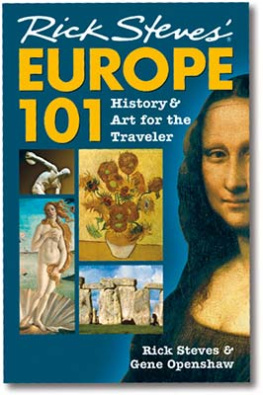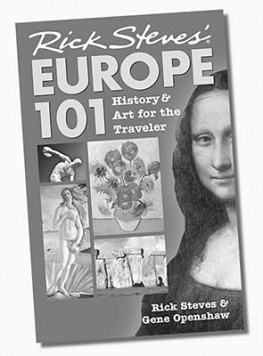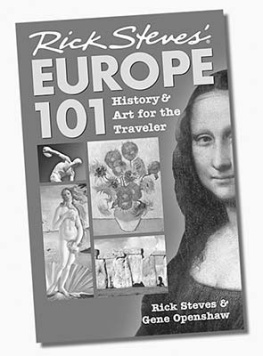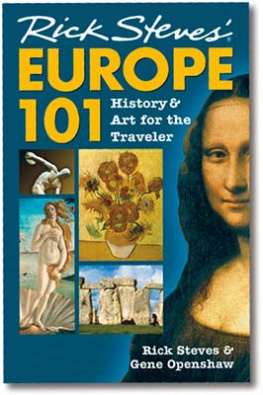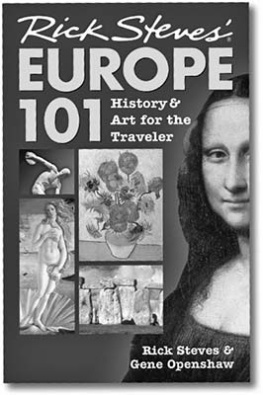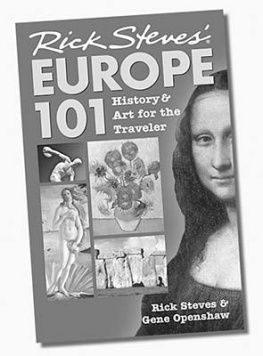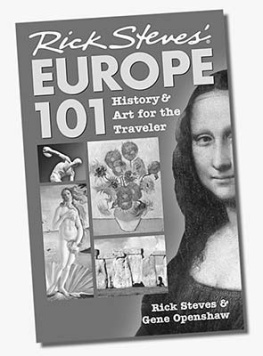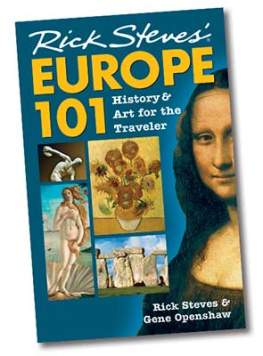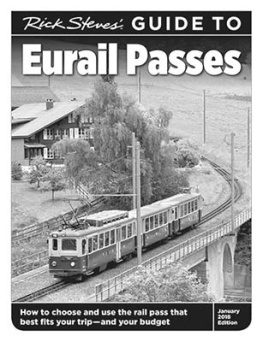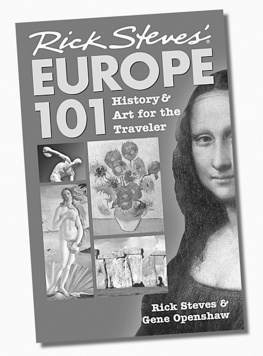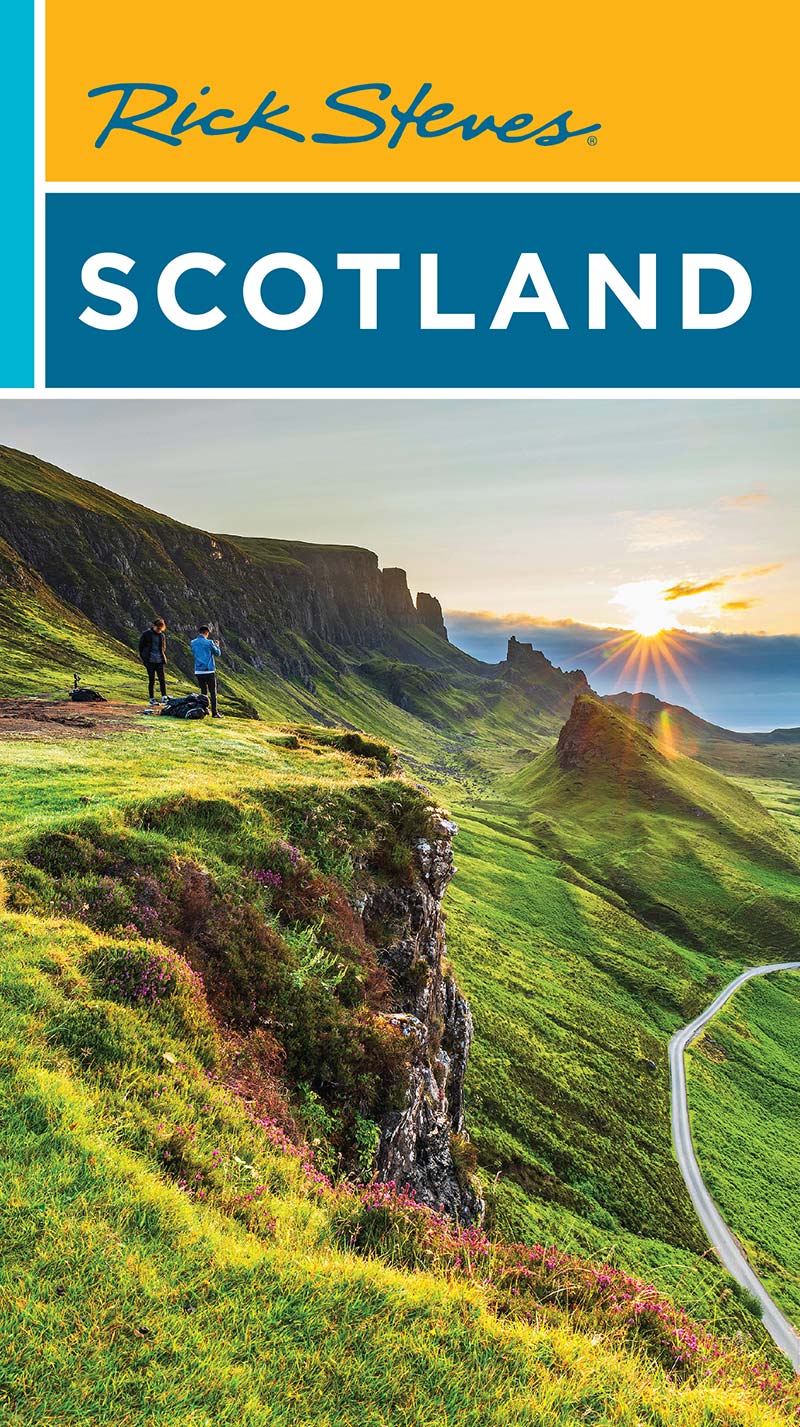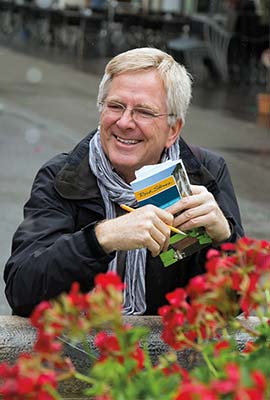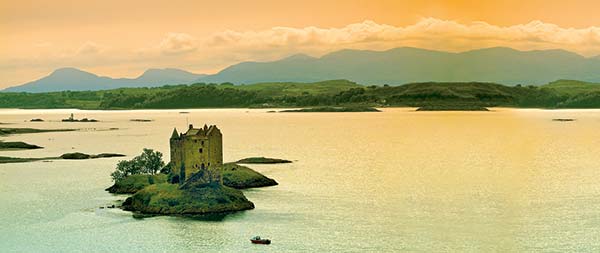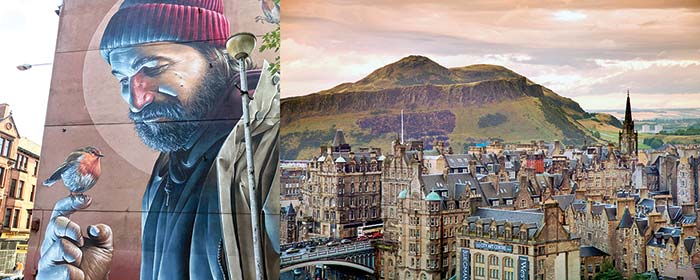Contents
Rick Steves
SCOTLAND
Rick Steves with Cameron Hewitt
Welcome to Rick Steves Europe
Travel is intensified livingmaximum thrills per minute and one of the last great sources of legal adventure. Travel is freedom. Its recess, and we need it.
I discovered a passion for European travel as a teen and have been sharing it ever sincethrough my bus tours, public television and radio shows, and travel guidebooks. Over the years, Ive taught millions of travelers how to best enjoy Europes blockbuster sightsand experience Back Door discoveries that most tourists miss.
This book offers a balanced mix of Scotlands rich cultural heritage and the rugged beauty of its countryside. Its selective: Rather than listing dozens of islands, I recommend only the best ones. And its in-depth: My self-guided city walks and driving tours provide insight into the countrys vibrant history and todays living, breathing culture.
I advocate traveling simply and smartly. Take advantage of my money- and time-saving tips on sightseeing, transportation, and more. Try local, characteristic alternatives to expensive hotels and restaurants. In many ways, spending more money only builds a thicker wall between you and what you traveled so far to see.
We visit Scotland to experience itto become temporary locals. Thoughtful travel engages us with the world, as we learn to appreciate other cultures and new ways to measure quality of life.
Judging by the positive feedback I receive from readers, this book will help you enjoy a fun, affordable, and rewarding vacationwhether its your first trip or your tenth.
Happy travels!
Rugged, colorful, and feisty, Scotland stands apart. From its stony architecture to its unmanicured landscape to its charming peopleand their peculiar fondness for haggisthis little land packs a big punch. A proud identity unites the sparsely populated country, all the way from the southern Lowlands, which border England just north of Hadrians Wall, up to the Norwegian latitudes of the rocky Highlands and remote coastal islands.
Scotland is one of three countries, along with England and Wales, that make up Great Britain. Add Northern Ireland, and youve got the United Kingdom (UK). Scotland is not a sovereign state (it shares the monarchy with the rest of the UK), but it is a nation in that it has its own traditions, ethnic identity, languages, and football league. To some extent, it even has its own government.
In modern times, Scotland has enjoyed its greatest measure of political autonomy in centuriesthe Scottish parliament convened in 1999 for the first time in almost 300 years. Though its powers are limited (most major decisions are still made in London), the Scottish people are enjoying increased self-governance. The question of total independence from the UK remains a pivotal issue in Scottish politics.
Scotland even has its own currency...sort of. Scotland uses the same coins as England, Wales, and Northern Ireland but prints its own bills, featuring Scottish rather than English people and landmarks. Fortunately for visitors, all UK currency works throughout the UK.
Building-size murals enliven Glasgows streets; Arthurs Seat hovers over Edinburghs old town.
Across Scotland, fortunes were long tied to the sea; its leading cities, Edinburgh and Glasgow, are located along firths (estuaries), where major rivers connect to ocean waters. Outside those cities, Scotland features misty glens, brooding castles, windswept moors, peaty whisky, shaggy Highland cattle (hairy coos), and a vivid, invigorating culture.
The northern Highlands feature a wild, undulating terrain, punctuated by lochs (lakes) and fringed by sea lochs (inlets) and islands. The southern Lowlands are relatively flat and urbanized.
The geologic fault line that divides the Highlands from the Lowlands also divides Scotland culturally. Historically, the country had two distinct identities: refined Lowlanders in the southern flatlands and rougher Highlanders in the northern wilderness. After the 16th-century Scottish Reformation, the Lowlanders embraced Protestantism, while most Highlanders stuck to Catholicism.
Today, the Lowlands are dominated by rival cities: bustling Edinburgh, on the east coast, and friendly Glasgow, on the west. Edinburgh, the capital, teems with history and is rich in culture. Its been home to esteemed writers (Robert Rabbie Burns, Robert Louis Stevenson, Sir Walter Scott) and hosts a huge international arts festival every August. Glasgow, once gloomy and industrial, is now a hip, laid-back center of art, music, and architecture. Other Lowlands highlights include the town of Stirling with its grand castle, and the university town and golf mecca of St. Andrews.
The Kilt
The kilt, Scotlands national dress, is intimately tied to the countrys history. It originated in the 1500s as a multipurpose robe, toga, tent, poncho, and ground cloth. A wearer would lay a length of fabric (roughly 2 x 6 yards) on the ground, scrunch it up into pleats, then wrap it around the waist and belt it. Extra fabric was thrown over the shoulder or tucked into the belt, creating both a rakish sash and a rucksack-like pouch.
The colors and patterns of the first kilts depended on who wove them and what dyes were available in a locale (colors were muted, unlike later kilts). Because members of one clan tended to live in the same area, they often wore similar patternsbut they werent specifically designed to represent a single clan until much later.
The kilt became standard Highlands dress and a patriotic statement during conflicts with England. After the Battle of Culloden in 1746, the victorious English dismantled the Scottish clan system. Wearing the kilt, speaking Gaelic, and playing the bagpipes were all outlawed.
In 1782, kilts were permitted again, but by then the tradition had faded, and many Scots no longer wanted to wear one. Then, in 1822 King George IV visited Edinburgh (the first royal visit in 200 years). In a not-so-subtle assertion of his authority over Scotland, he wore a kilt. That bit of pageantry charmed Scottish noblemen, and the kilt was in vogue once more.
During the kings visit, Sir Walter Scott organized a Highland festival that reinvented and romanticized the image of traditional Scottish culture, giving it a newfound respectability. The brightly colored clan tartans youll see in Scottish souvenir shops got their start at this time, as fabric salesmen hastily designed and assigned patterns to particular clans to capitalize on the newfound enthusiasm for kilts.

